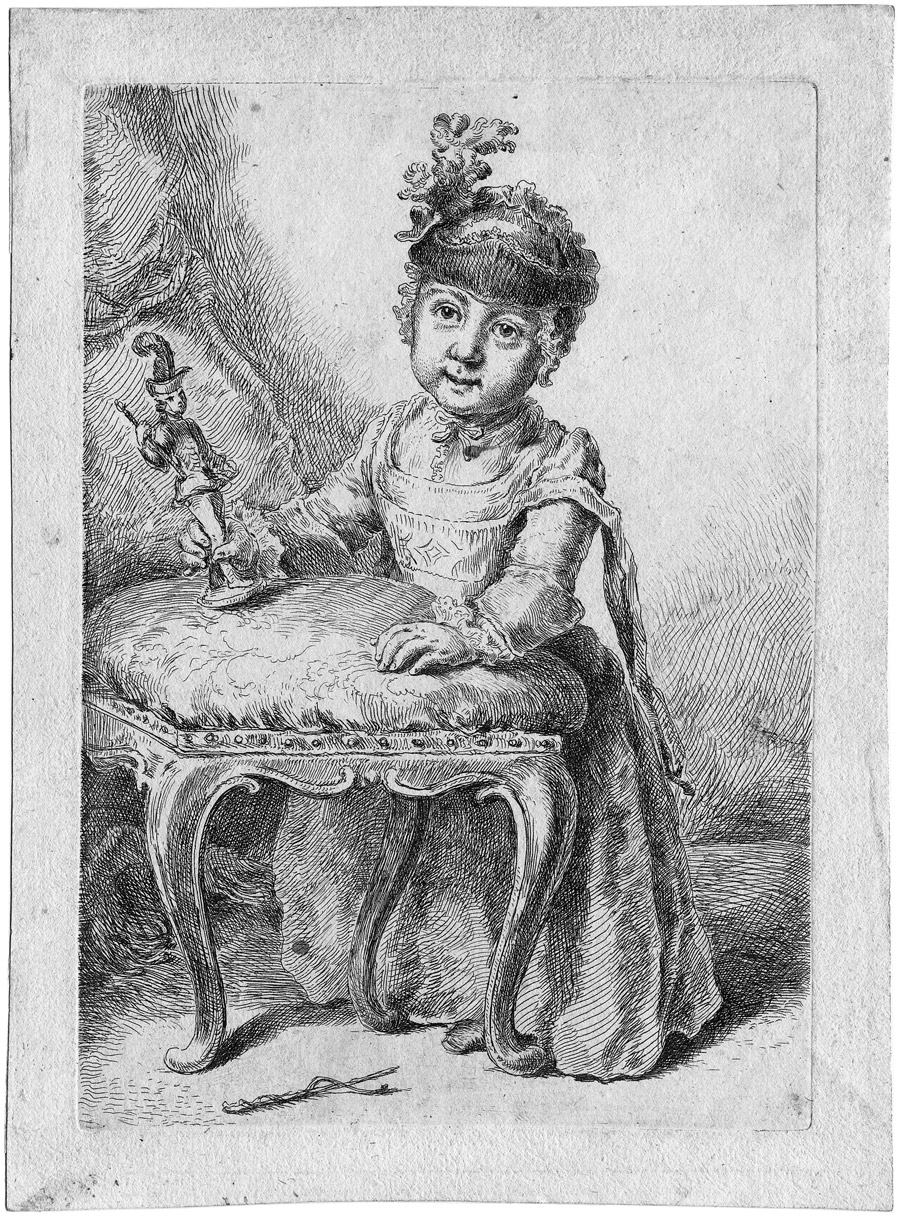Loading the page ...
Joachim Martin Falbe
(1709–1782, Berlin)
Frederick II as a child. Etching. 20.1 x 12.2 cm. Heinecken 1; Nagler 5; Heller-Andresen 3; Soldan 21.
The portrait painter and etcher Joachim Martin Falbe was trained by Johann Harper and Antoine Pesne, whose close collaborator he was for fifteen years. Falbe was much in demand as a talented portraitist in Berlin society during the reign of Frederick the Great and was appointed a member of the Academy there in 1764. His printed œuvre comprises thirty-two sheets and was created in the remarkably short period of only two years (1750–1752), which indicates that etching for Falbe was only a sideline or private pastime. The great rarity of most of these prints has made it very difficult to assemble the œuvre. In the older critical literature only individual etchings are recorded or described in very summary terms. Falbe’s style was influenced by his contemporary Christian Wilhelm Ernst Dietrich (1712–1774) and by French Rococo engravers.
According to Heinecken the present very rare print is Falbe’s first attempt using the etching technique. This portrayal of Frederick the Great as a child is derived from a painting by Antoine Pesne, now at Drottningholm Palace, the summer residence of the Swedish royal house. Pesne’s painting differs in details from the etching, showing the little Frederick wearing the Black Eagle order and a pet dog sitting on the chair, beside which a drum is lying. A preliminary drawing for the present etching by Falbe is kept in the Berlin Kupferstichkabinett. What is surprising about the print is the intimate, informal character of the iconography. We are not concerned here with a grandiose, aloof presentation of royal dignity, but rather with a sensitive, seemingly private portrayal of a child with a toy figure. This everyday scene is executed in a remarkably sophisticated and free etching technique, which convincingly reflects the spontaneity of the original drawing.
A very fine, contrasting impression with margins around the platemark. A trial proof printed in silver-greyish ink, which must be regarded as unique, is enclosed. Minor ageing, otherwise in perfect condition.
